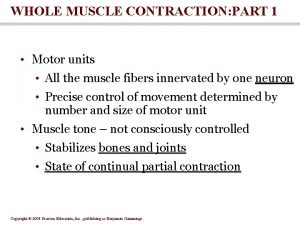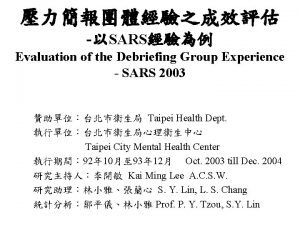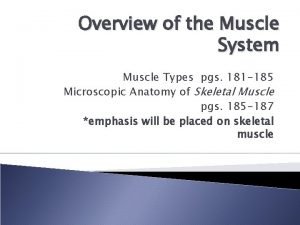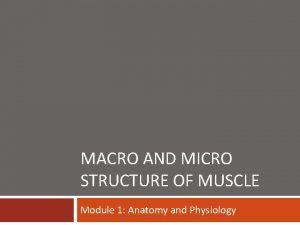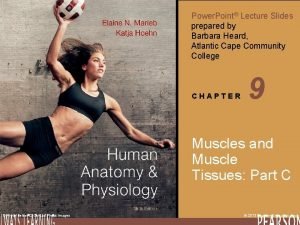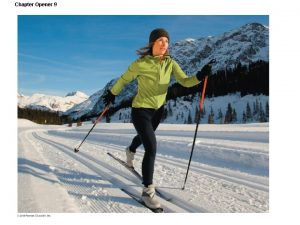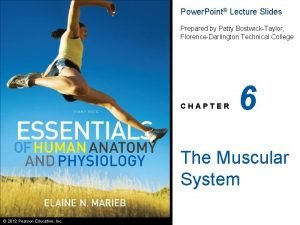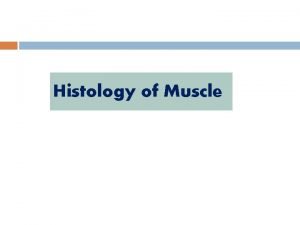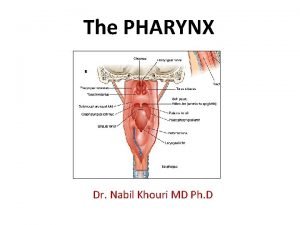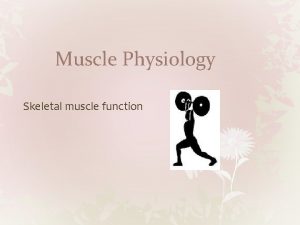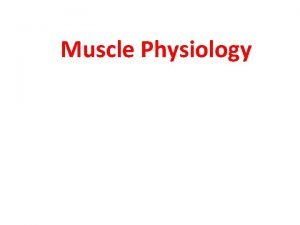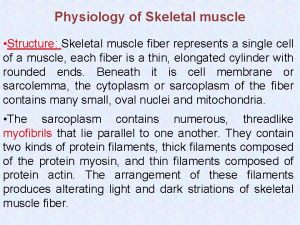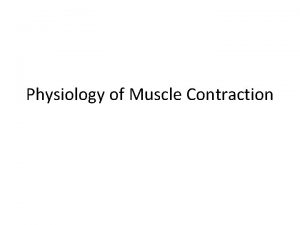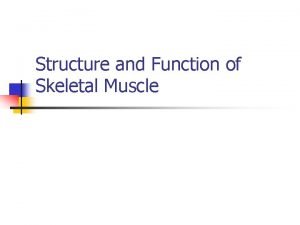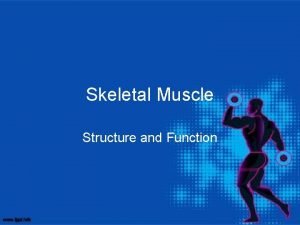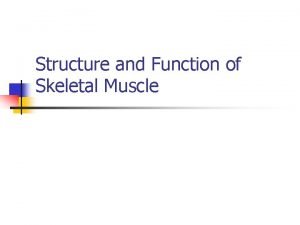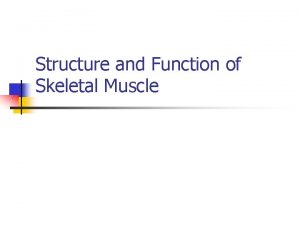Skeletal Muscle Physiology cont Diagram the chemical and













- Slides: 13

Skeletal Muscle Physiology cont. • Diagram the chemical and mechanical steps in the cross-bridge cycle and explain the effect on the muscle fiber length. Describe the end of contraction mechanisms. Muscle excitation and energy sources. • Three roles of ATP in muscle function. • Three sources of ATP for muscle function.

Sliding myofilaments shorten sarcomeres

Excitation -contraction coupling • ACh binds to, opens nicotinic Na+/K+channels • Muscle depolarizes • Ca 2+ released from sarcoplasmic reticulum • Ca 2+ binds to troponin, cross-bridge cycling between actin & myosin begins, filaments slide

http: //www. sci. sdsu. edu/movies/actin_myosin_gif. html

Draw and label a diagram to show the following stage of the cross-bridge cycle: 1. At rest, when the muscle is not stimulated.

Skeletal Muscle Physiology cont. • Diagram the chemical and mechanical steps in the cross-bridge cycle and explain the effect on the muscle fiber length. Describe the end of contraction mechanisms. Muscle excitation and energy sources. • Three roles of ATP in muscle function. • Three sources of ATP for muscle function.

End of contraction • ACh destroyed by ACh-esterase in synapse • Muscle repolarizes • Ca 2+ returned to SR by Ca 2+ active transporter • ATP hydrolysis (+Mg) reextends myosin head • Muscle elastic elements recoil, muscle returns to resting length. Titin is the largest polypeptide known (34, 350 amino acids in length). It spans from the M to Z lines.

Draw and label a diagram to show the following stage of the cross-bridge cycle: 1. 2. At death when the muscle has depleted ATP. (rigor)

Genetic mutation turns tot into superboy 4 -year-old is first documented human case, scientists say A German boy, seen here at seven-months old, has a genetic mutation that boosts muscle growth.


Excitation-Contraction Coupling • action potentials, generated at neuromuscular junction travel around sarcolemma and through Ttubules • T-tubules signal SR to release Ca 2+ into sarcoplasm (cytosol) • Ca 2+ saturates troponin (in non-fatigued state) • troponin undergoes conformational change that lifts tropomyosin away from actin filament

E-C Coupling (cont. ) • myosin head attaches to active site on actin filament forming cross-bridge • after forming cross-bridge, myosin head moves actin-myosin complex forward and ADP and Pi are released • ATP binds with myosin head, which releases actin, and returns to original position • in resting state, myosin head contains partially hydrolyzed ATP (ADP and Pi)

E-C Coupling (cont. ) • entire cycle takes ~50 ms although myosin heads are attached for ~2 ms • a single cross-bridge shortens 10 nm • as long as action potentials continue, Ca 2+ will continue to be released • when action potentials cease, SR Ca 2+ pumps return Ca 2+ ceasing contractions • skeletal motor units follow “all or nothing” principle
 Physiology of muscle contraction
Physiology of muscle contraction Smooth muscle contraction
Smooth muscle contraction Debriefing report
Debriefing report Cont or cont'd
Cont or cont'd Chemical composition of skeletal muscle
Chemical composition of skeletal muscle Anterior surface of scapula
Anterior surface of scapula Comparison of skeletal cardiac and smooth muscle
Comparison of skeletal cardiac and smooth muscle Cardiac skeletal and smooth muscle comparison
Cardiac skeletal and smooth muscle comparison Muscle cell structure
Muscle cell structure Slide
Slide Comparison of skeletal cardiac and smooth muscle
Comparison of skeletal cardiac and smooth muscle Characteristics of skeletal smooth and cardiac muscle
Characteristics of skeletal smooth and cardiac muscle Cardiac muscle tissue
Cardiac muscle tissue Layers of pharynx
Layers of pharynx
